Convolution II: Square box
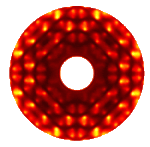
Convolution
Convolution theorem
Square box
Rectangular box
Circular box
Box at 45 degrees
Goto
Contents
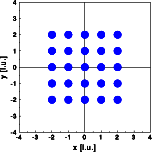
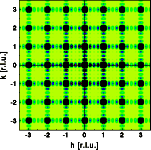
The Fourier transform of a real space product
gives the convolution of the Fourier transforms of the terms in the product
To prove this statement lets simulate the box function and calculate its Fourier transform. (As additional exercise, the students may be asked to analytically calculate the Fourier transform of a box function.) The box is simulated by filling the shape at random with a large number (800) of atoms (left image). The resulting electron density distribution fills the box fairly equally. Next The Fourier transform is calculated in a small section of reciprocal space near the origin. The calculated intensity distribution corresponds to the distribution of the subsidiary maxima observed in the Fourier transform above.
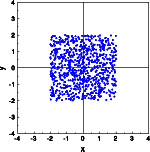
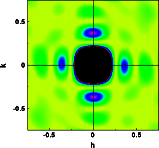
The deviations from square symmetry are due to the limited statistics provided by the 800 atoms within the square box.